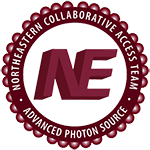Development of 2nd generation aminomethyl spectinomycins that overcome native efflux in abscessus.
Publication Type:
Journal ArticleSource:
Proc Natl Acad Sci U S A, Volume 121, Issue 2, p.e2314101120 (2024)Keywords:
Animals, Anti-Bacterial Agents, Anti-Infective Agents, Ethylenes, Humans, Mice, Microbial Sensitivity Tests, Mycobacterium abscessus, Mycobacterium Infections, Nontuberculous, Nontuberculous Mycobacteria, SpectinomycinAbstract:
<p>(), a nontuberculous mycobacterial (NTM) species, is an emerging pathogen with high intrinsic drug resistance. Current standard-of-care therapy results in poor outcomes, demonstrating the urgent need to develop effective antimycobacterial regimens. Through synthetic modification of spectinomycin (SPC), we have identified a distinct structural subclass of N-ethylene linked aminomethyl SPCs (eAmSPCs) that are up to 64-fold more potent against over the parent SPC. Mechanism of action and crystallography studies demonstrate that the eAmSPCs display a mode of ribosomal inhibition consistent with SPC. However, they exert their increased antimicrobial activity through enhanced accumulation, largely by circumventing efflux mechanisms. The N-ethylene linkage within this series plays a critical role in avoiding TetV-mediated efflux, as lead eAmSPC 2593 displays a mere fourfold susceptibility improvement against Δ in contrast to the 64-fold increase for SPC. Even a minor shortening of the linkage by a single carbon, akin to 1st generation AmSPC 1950, results in a substantial increase in MICs and a 16-fold rise in susceptibility against Δ. These shifts suggest that longer linkages might modify the kinetics of drug expulsion by TetV, ultimately shifting the equilibrium towards heightened intracellular concentrations and enhanced antimicrobial efficacy. Furthermore, lead eAmSPCs were also shown to synergize with various classes of anti- antibiotics and retain activity against clinical isolates and other mycobacterial strains. Encouraging pharmacokinetic profiles coupled with robust efficacy in murine infection models suggest that eAmSPCs hold the potential to be developed into treatments for and other NTM infections.</p>
